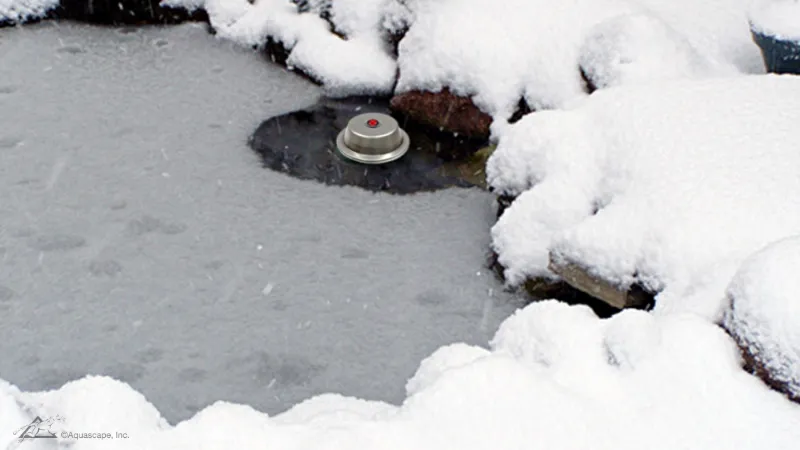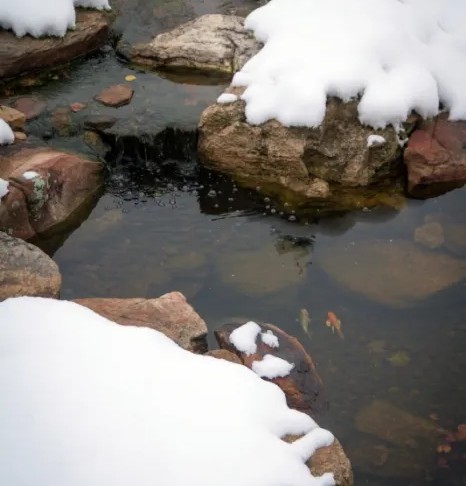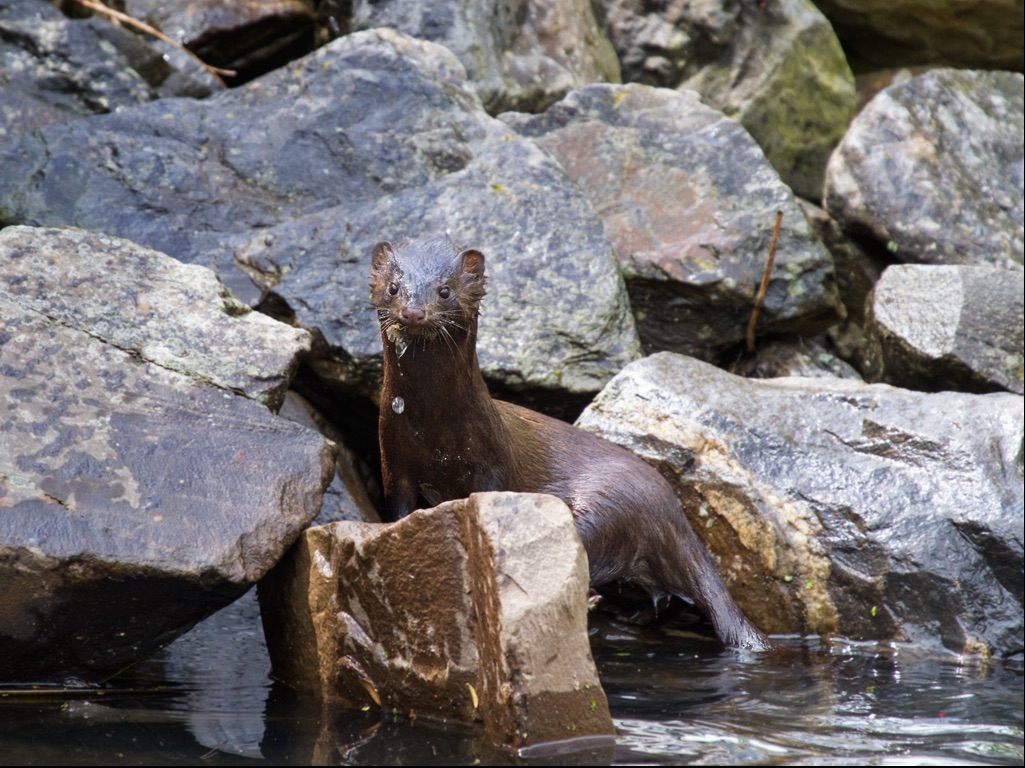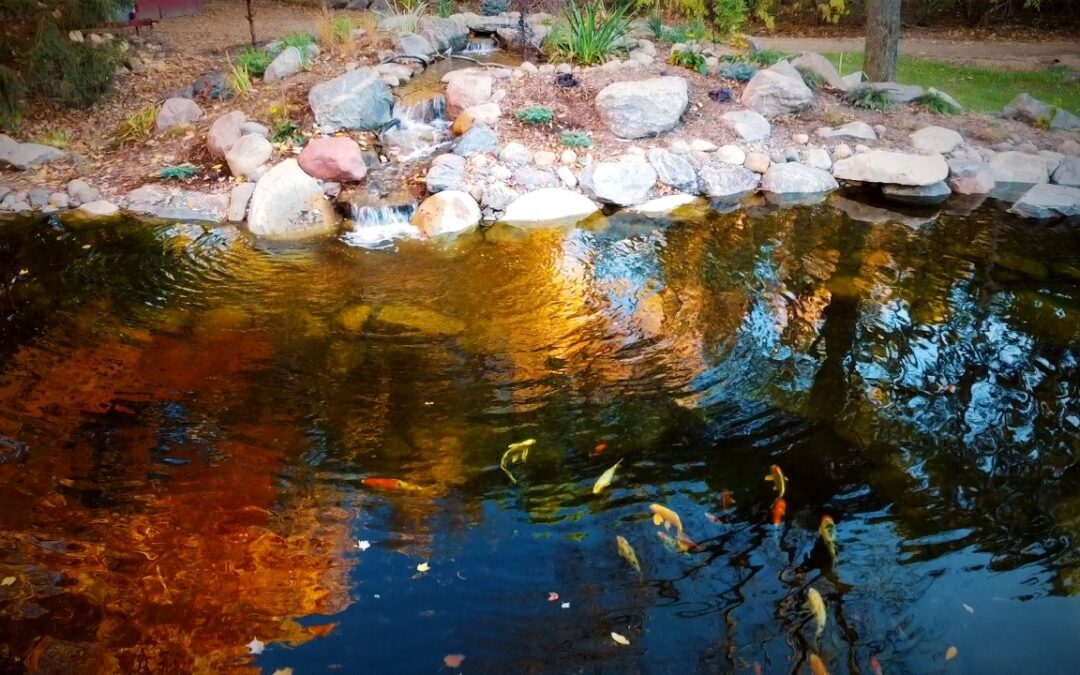If you’re a pond owner in Minnesota—or considering becoming one—it’s natural to wonder whether koi fish can survive our harsh winters. With subzero temperatures, deep snow, and months of ice cover, it’s a smart question. The good news is: yes, koi can survive Minnesota winters if your pond is properly designed and maintained.
Let’s walk through everything you need to know to give your koi the best chance of making it through winter safely and stress-free.
Pond Depth: The Foundation of Overwintering Koi
The first key to successful overwintering is depth. Koi need a place to retreat below the freeze line, where the water remains insulated and stable in temperature. We recommend a minimum depth of 2 feet, though 30 inches or more is ideal in colder zones like Minnesota.
At Pond King Water Gardens, we design our koi ponds with built-in deep zones and fish caves, not only to help fish survive winter but also to protect them from predators year-round.

Koi resting calmly in deep water beneath snow-covered edges of a Minnesota pond.

A floating de-icer keeps a small hole in the ice, essential for gas exchange in winter. Pair with an Aquascape aerator or winter pump.
Why You Need a Hole in the Ice
Once the surface of the pond freezes over, gases like ammonia and carbon dioxide can build up under the ice. This creates a dangerous environment for your fish.
To prevent that, your pond needs to maintain an open hole in the ice. We do this with:
- A floating pond de-icer, which gently keeps a small area ice-free
- A pond aerator, which keeps water circulating and oxygenated
Together, these tools allow for proper gas exchange and ensure your koi have access to oxygen even during the coldest months.
Feeding Koi in Cold Weather: When to Stop
As the water temperature drops, so does your koi’s metabolism. Once your pond is consistently below 50°F, it’s time to stop feeding them altogether. Their digestive systems slow down, and food that isn’t fully processed can cause internal issues.
In the fall, it’s a good idea to switch to a cold-water koi food that’s easier to digest as temperatures begin to dip, and then taper off feeding entirely before winter sets in.

Koi visible beneath the surface—an open hole in the ice is keeping their environment healthy.
Signs Your Koi Are Doing Well During Winter
When your pond is set up correctly, your koi will rest quietly in the deeper areas of the pond. Here are signs they’re doing just fine:
- They’re mostly inactive, hovering near the bottom
- They’re not gasping at the surface
- The water remains clear, with no foul odor
- A hole in the ice remains open throughout winter
The Rare Risk: Mink and Winter Predators
While overwintering koi in Minnesota is safe for most homeowners, we believe in being honest about the risks, however rare.
In a small number of cases, clients have lost fish during the winter—not because of cold, but because of predators. The main concern isn’t herons (they don’t wade into frozen ponds) but rather mink, which are fast, agile, and active in winter.
Because we keep a small hole in the ice open to allow for gas exchange, that opening can also give a mink an entry point. If you’ve got mink in your area, it’s worth considering a few deterrents.

Mink are stealthy winter predators that can slip into ponds through openings in the ice.
How to Deter Mink in the Winter
The size of the open hole in the ice can fluctuate depending on temperature and wind, so you may not always know how exposed your pond is. If mink are active in your area, consider:
- Placing a secure wire cage or grate over the de-iced hole
- Installing a low-voltage electric fence around the pond’s perimeter
- Using motion-activated lights (safe for cold climates)
- Watching for tracks in fresh snow or signs of tunneling
Whether or not these steps are necessary depends on your property and how much value you place on your koi. We’ve had clients overwinter koi for years without issue—and others take extra steps for peace of mind.
Bringing Your Koi Indoors: An Alternative Option
If you want to eliminate the risk entirely, another option is to bring your koi indoors for winter. This typically involves setting up a large holding tank in your garage or basement, equipped with a pump, filter, aerator, and temperature control.
It’s important to research the proper setup before moving your fish indoors. The water should remain stable (usually 50–60°F), with excellent oxygen levels and clean filtration.
We’re happy to consult on indoor setups if this route feels right for your situation or you can consult with an indoor aquarium expert.
Prefer to Skip Fish Altogether?
If the idea of overwintering koi sounds stressful—or if predators are a major concern in your area—you can still enjoy the sound and movement of water without keeping fish.
A pondless waterfall or fountainscape offers the beauty of flowing water with less maintenance and no winter fish care required.
Need Help Winterizing Your Pond?
We offer full fall shutdown services, equipment installation, and water feature checkups—but at this time, these services are only available to clients with features built by Pond King Water Gardens, whether you’re an existing client or a new one we’ve designed and installed for.
This allows us to provide the highest level of care, using systems we know inside and out. If we’ve built your pond, we’d be honored to help you get it ready for winter.
If we didn’t build your feature but you’re looking for guidance, feel free to reach out. We’ll gladly point you in the right direction.

